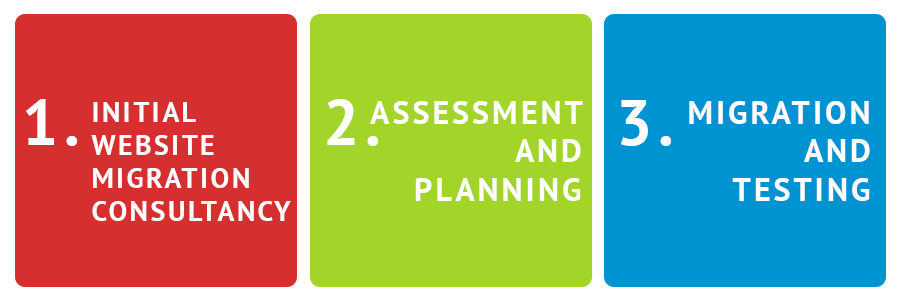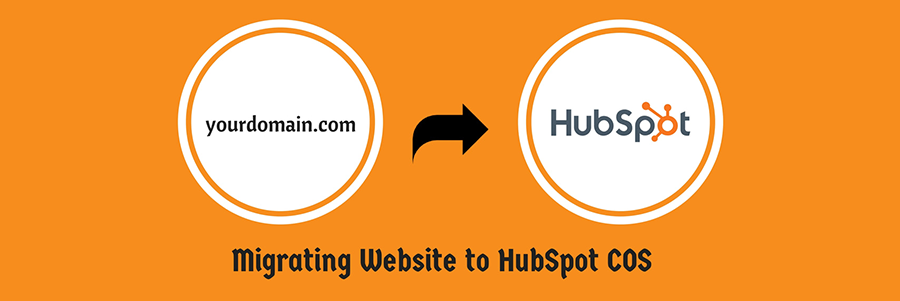Website Migration Services
If you are planning to migrate your website, you are about to get yourself into a web of intricate decision-making, flexible planning, as well as technical challenges.
Website migration is a technical process to change its technology or its setup. However, a simple update is not a site migration. It is a severe change regarding the site’s platform, structure, content, design, as well as its location.
Moreover, migrating a site can be an issue-solving necessity; it inevitably brings with it a lot of potential risks. These risks could be anything from losing your ranks on the Search Engine Research Page(SERP) to entirely losing the parts of your site.
Why website migration is important
There is a possibility of numerous situations that you might face as a website owner, where website migration seems to be the best and only option.

1. Changing your website structure, design, or navigation.
The website migration process shouldn’t be carried out on a whim. Do you feel that the intensity of your sales and conversions are weak because of your website’s look? You should first prove it by excluding those aspects of your site, such as its design or architecture, that causes the issue, respectively.
2. Moving to a New Framework of CMS.
Having a website on an outdated platform can painfully limit effective possibilities. It can be disruptive to your target audience, which can result in a loss of sales and profit.
3. Adding a Mobile Version.
In the era of mobile-first indexing and considering the immense ratio of mobile to desktop traffic, there is no way you are not giving thoughts on optimisation for mobile platforms. Yet, you should first analyse your target audience preferences and figure out an appropriate cost-to-benefit balance of creating a mobile-specific experience.
4. Moving from HTTP to HTTPS.
Implementing the HTTPS protocol on your site is not only essential from a security standpoint. If you don’t have an HTTPS website, it can take a toll on your user experience as most browsers will pop up a warning for the unsecured pages. However, you need not have to switch your entire site to HTTPS right away. You can start with the webpages that store users’ personal information.
5. Moving to a New Server.
If you are not satisfied with your server’s performance or its hosting conditions, you might want to switch to another host. Take sufficient time to research and find the right host.
6. Changing the Domain Name.
You might in need of a new domain name due to the rebranding or getting your hands on a better URL. But similar to the other reasons for migration, chaining the domain name is a big decision that you shouldn’t make on the spur of the moment.
7. Hacked site.
Website hacking is exploiting the vulnerabilities of the target site to gain unauthorised privileges to it. Thus, website migration is one of the essential ways to get the original glory of your website back.
8. Slow Website.
Does your website incorporate a massive amount of content or plugins? Then it needs a larger platform. If the current platform of your site doesn’t have enough space, it can slow down your website’s speed. Hence, migrating your site to the more significant ground can help to regain its speed and performance.
Types of Website Migration
1. Protocol change: It is migrating from HTTP to HTTPS
2. Subdomain or subfolder change: This happens when the owner decides to move certain areas into subdomains or subfolders. This concept is common in international SEO.
3. Top-level domain name change: When an organisation launches an international website, it needs to move country code top-level domains to generic top-level domains.
4. Website structure changes: Changes to the site’s structure can affect internal linking as well as URL structure.
Website Migration Process
We at Magenta Hive Technologies take pride in getting to know our clients and the business that they have at the deepest possible level. Our ulterior motive is to better understand our client’s objectives and priorities, along with any challenges that may be faced during the website migration process.
Our customised website migration solutions incorporate the following three-step process:

Step 1: Initial Website Migration Consultancy
During the initial consultancy, our experts will help to determine the goals and objectives for your project. Simultaneously, we chalk out the best possible course of action that you should decide on to go ahead. We will make sure that you are provided with the right objective and impartial advice to make the best possible decision for the benefit of your business. Our initial consultation is 100 percent free of charge, with no burden to carry on.
Step 2: Assessment and Planning
We insist on planning every detail of the website migration process from start to finish line. This enables us to pre-empt any potential complications along the way. Only when we are 100 percent certain and confident about the project plan and have received your final approval, we’ll carry ahead the migration process.
Step 3: Migration and Testing
The final step that we take in the process is the physical migration of your site. It is followed by comprehensive testing of both your website’s performance and security at its new home. Thus, rather than taking chances, we insist on verifying that every facet of the project has been completed successfully. We then hand over the keys back to the client.
Website migration can be advantageous in various ways. It significantly boosts the performance, visibility as well as the security of your site. Now, if you are ready to go ahead with the website migration process, let us first be clear on the potential benefits and possible disadvantages of this process for your business below:
Advantages of website migration
Migrating a WordPress site to Amazon Web Services(AWS)

(i) Performance: Are you using the WordPress platform for an e-commerce or similar business? Well, such a platform is generally loaded with massive content, heavy plugins, and themes that eat up a lot of memory. Hence, it overloads the database eventually, and as a result, the website performance reduces to derail the user experience.
In such a case, moving from the existing platform to a large scale cloud platform is the right decision. E-commerce platform migration gives you the freedom of space as well as performance for the business owners. This way, the overall site performance gets better, which increases customer credibility and results in better ROI.
(ii) Scalability: AWS is a highly suggested and cost-effective platform. It offers to pay as you grow setup. Thus, you can choose the required setup as per your current business needs. Eventually, when your online users, content, or the plugins increases, you can move to a better setup with minimal additions to the current price.
(iii) Reliability: AWS is known as a highly secured and reliable platform across the globe. There are data centres across the world which keeps your crucial information highly secured and can be backed up to restore whenever needed.
Website migration to WordPress

(i) Easy to use: One of the widespread benefits of using WordPress platform is its ease of use. The users can update WordPress blogs and sites without any prior experience or knowledge in web design or coding.
(ii) It is customisable: WordPress offers thousands of unique themes and plugins. This way, users can customise every single aspect of their site. With a unique website, firms can establish a unique brand. It also helps them to tailor their online presence to their respective target markets.
(iii) SEO-friendly: WordPress is search engine friendly. This is because the platform has a streamlined and straightforward HTML code. Thus, Google and other search engines can easily index and categorise the WordPress website.
Migrating your site to HubSpot

(i) All in one platform: HubSpot is a leading platform. Users know it as an all in one platform that connects your content management system and your customer relationship management system. With Migrating your site to HubSpot, you can use smart features and personalisation to tailor your content, offers, and outreach to your psychographic and demographic factors.
(ii) Responsive websites: Your sites on HubSpot will be adequately responsive to all popular screen sizes. It is regardless of whether or not your website was responsive to start with.
Disadvantages of migrating a website
(i) Time-consuming: Website migration is a time-consuming process. The process has to be efficiently planned and executed to have a strong impact. This is why it requires time because even a small mistake can take its toll.
(ii) It’s complicated: The migration process is not a straightforward task. It is an intricate work and needs to be approached systematically and thoroughly.










